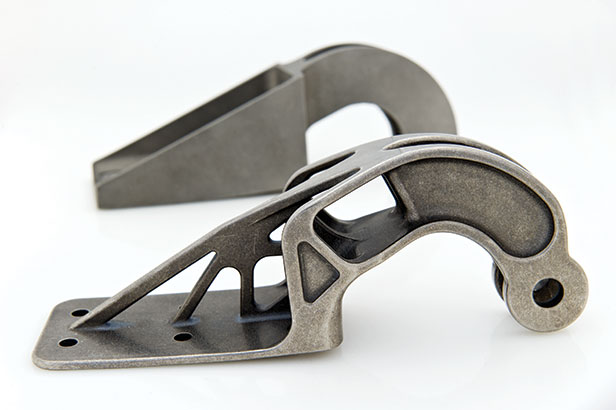Printing Parts

Chris Turner, an engineer at EADS Innovation Works near Bristol, England, twists a lever on a boxy black machine, and a porthole opens to reveal a dark cavity with a floor covered in gray powder. An invisible beam sweeps across the powder, and sparks fly. The box is an additive-layer manufacturing machine, sometimes known as a 3-D printer, and it is making a small part for an Airbus A380 airliner. EADS, which owns Airbus, hopes the device can transform manufacturing. Among other things, it could produce parts that make airplanes lighter, so they use less fuel.
3-D printers can make complex shapes that can’t be manufactured with conventional techniques. Until recently, however, they couldn’t print strong, durable objects. The machine Turner is using can make intricate forms out of high-grade metal, an advance that has allowed researchers to apply the design possibilities of 3-D printing to mechanical parts. The printers use software that works out where the parts need to bear loads and places material just in those areas, halving the weight of the complete part without sacrificing strength. That saves energy, metal, and money. The complex, curving forms that result couldn’t be cast in a mold or carved out of a larger block even with the most advanced computer-controlled tools, but they can be printed in a succession of layers tens of micrometers thick.
Turner is testing whether printed parts can stand up to use in airliners, helicopters, and spacecraft. “Once we know that, we can scale up,” he says. “We could adapt this to make large aircraft components.” The possibilities include wing spars, the long beams that support wings.
Keep Reading
Most Popular
Large language models can do jaw-dropping things. But nobody knows exactly why.
And that's a problem. Figuring it out is one of the biggest scientific puzzles of our time and a crucial step towards controlling more powerful future models.
How scientists traced a mysterious covid case back to six toilets
When wastewater surveillance turns into a hunt for a single infected individual, the ethics get tricky.
The problem with plug-in hybrids? Their drivers.
Plug-in hybrids are often sold as a transition to EVs, but new data from Europe shows we’re still underestimating the emissions they produce.
Google DeepMind’s new generative model makes Super Mario–like games from scratch
Genie learns how to control games by watching hours and hours of video. It could help train next-gen robots too.
Stay connected
Get the latest updates from
MIT Technology Review
Discover special offers, top stories, upcoming events, and more.